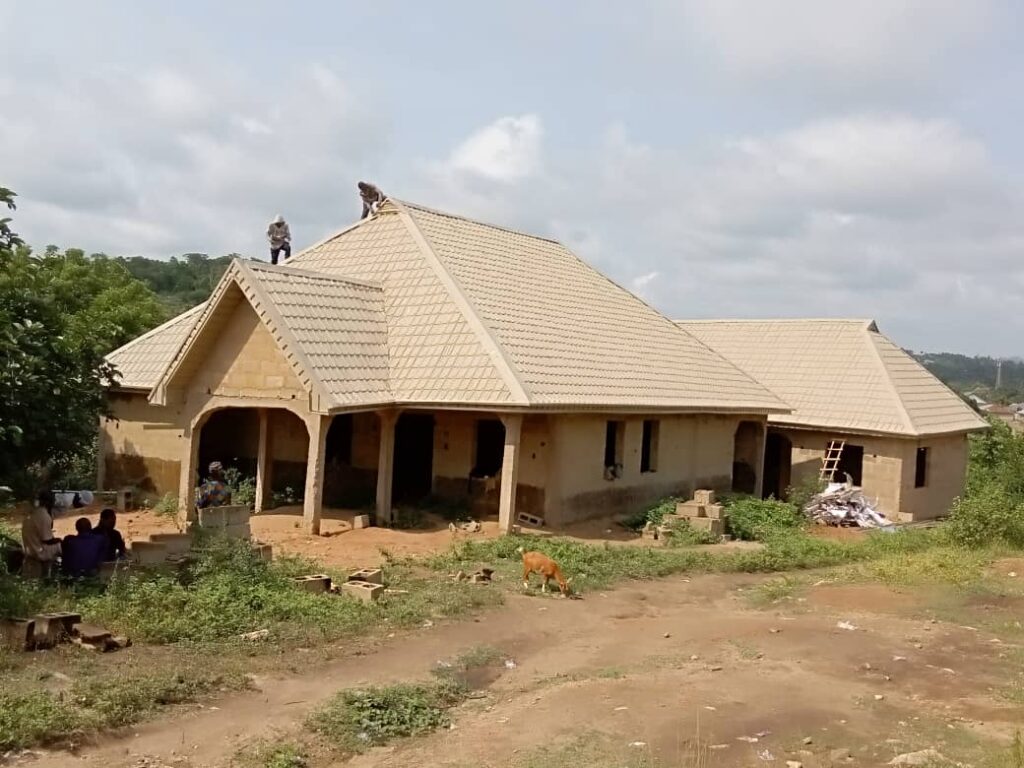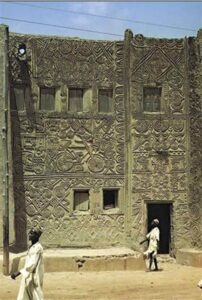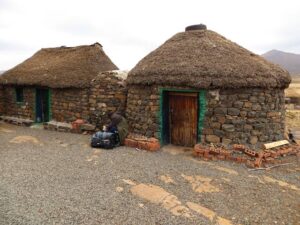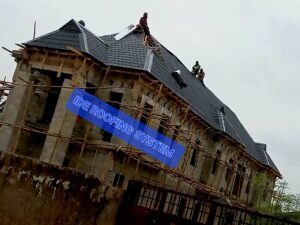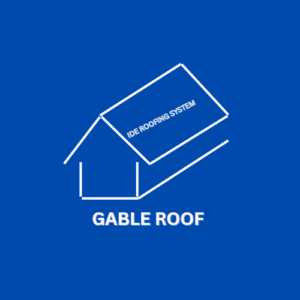In the pre-colonial era, Nigerians utilized locally available materials like wood, clay, bamboo e.t.c to construct roofs that were useful in protecting them against the harsh sun of the summer and the harmattan cold.
In the Southern part of Nigeria where heavy rainfall was experienced, palm fronds and raffias were used to construct pitched houses that allowed for water to shed efficiently and provided natural ventilation while flat roofs were more common in the Northern part of Nigeria because of the sparse rainfall and heat. Roofs constructed in the Northern part of Nigeria were usually made of clay or timber covered with mats.
The arrival of the Europeans brought about a change in the architectural mark up of the Nigerian roof styles. Modern houses now come with various designs such as gable roofs, hip roofs and complex roof designs which are all roofed with corrugated metal sheets such as Aluminium roofing sheets, alu zinc etc and tiles such as shingles and other stonecoated roof tiles.
Popular Roof Styles in Modern Nigeria
In today’s Nigeria, roofing your house comes with careful planning. First of all, you need to know the roof style , and which roofing material best fits into this style.
There are so many different types of roofing styles common in modern day Nigeria but we are going to be discussing the three most common ones
- Gable roofs
- Hip roofs and;
- Flat roofs
GABLE ROOFS
This is a roof with two slopes that make a triangle at the end of the building. It is one of the easiest and most popular roof types, and it can provide good space and protection from rain during the rainy season and dust at harmattan. But it may not work well for areas with strong winds or storms. They are considered by many to be one of the most simplistic roof designs in Nigeria and were at some point the most common roof design in Nigeria.
PROS
- They are cheaper to build compared to other complicated roof structure.
- They withstand strong winds and storms better than gable roofs as a result of the absence of vertical ends or protrusion that can catch the wind
- They accomodate different kinds of roof materials such as aluminium, stonetiles or gerard, zinc and alu zinc, slate, e.t.c
- They provide easy water run off especially through the use of water collectors and rain gutters thereby preventing leaks and moisture damage to the walls or wood
- They offer more aesthetics and appeal than gable roof.
- Skylights can easily be constructed when using hip roof
CONS:
- They are cheaper to build compared to other complicated roof structure.
- They withstand strong winds and storms better than gable roofs as a result of the absence of vertical ends or protrusion that can catch the wind
- They accomodate different kinds of roof materials such as aluminium, stonetiles or gerard, zinc and alu zinc, slate, e.t.c
- They provide easy water run off especially through the use of water collectors and rain gutters thereby preventing leaks and moisture damage to the walls or wood
- They offer more aesthetics and appeal than gable roof.
- Skylights can easily be constructed when using hip roof
HIP ROOFS
This is a roof with four slopes that join at a ridge on top of the building. It is stronger and more lasting than a gable roof, and it can also give good space. The popularity of hip roofs has increased over time as it is currently considered the top choice design for bungalows. But they usually cost more and are generally harder to build than gable roofs.
PROS
- They are cheaper to build compared to other complicated roof structure.
- They withstand strong winds and storms better than gable roofs as a result of the absence of vertical ends or protrusion that can catch the wind
- They accomodate different kinds of roof materials such as aluminium, stonetiles or gerard, zinc and alu zinc, slate, e.t.c
- They provide easy water run off especially through the use of water collectors and rain gutters thereby preventing leaks and moisture damage to the walls or wood
- They offer more aesthetics and appeal than gable roof.
- Skylights can easily be constructed when using hip roof
CONS
- They are more complex and expensive to build when compared to gable roofs.
- They require more materials, labour and skills.
- They have more valleys also known as inner gutter which increases the risk of leaking and causing moisture damage unless properly sealed.
FLAT ROOFS
A flat roof is a roof that has no or very little slope, usually less than 0.5 pitch. In the last decade, flat roofs were mainly used in the construction of sheds, storage, warehouses e.t.c. but recently, flat roofs have grown popular and are seen in the construction of minimalist homes especially in the construction of urban estates located in Lekki, Ajah, e.t.c… With the increase in the demand of these flat roofs also known as arabian roofs, secret roofs, e.t.c. It has become necesarry to address the advantages and disadvantages associated with flat roofs. Flat roofs are mostly used in areas with little to no rainfall such as the far north (Sokoto, Borno e.t.c)
PROS
- They are cheaper to build compared to gable roofs or hip roofs and in fact every other roof structure. If you are looking to save money, flat roof should be the top on your list.
- They offer extra space for storage.
- They accommodate solar panels and skylights better than gable roofs and hip roofs.
- Faster installation process and cheaper labour.
CONS
- They have higher chances of water retention which will lead to potential leaks.
- They require more maintenance than every other roof structure since they are more prone to leakage
- They have shorter lifespan or warranty than gable roofs and hip roofs and might not last more than 10 to 20 years.
- They require proven expertise or errors are bound to occur.
- They require special water proofing materials.
- Thick and quality aluminium roofing sheets are the only roofing sheets of choice advisable for flat roofs.
After choosing your roof design, you need to pick a roofing material that best fits the design. You can also reach out to Ide Roofing System


